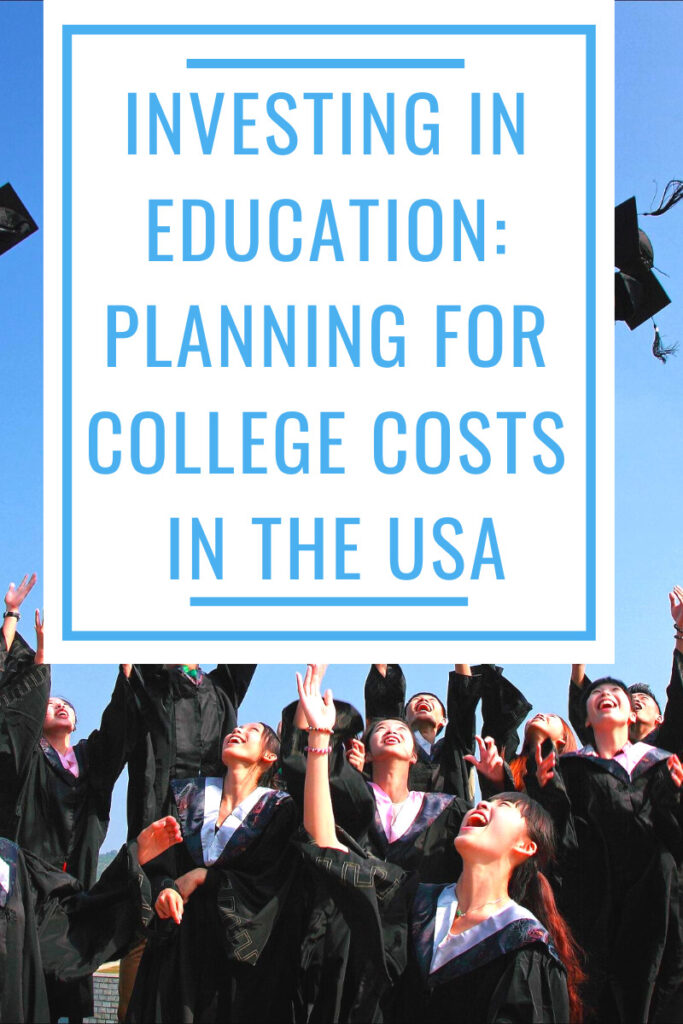Investing in education is one of the most significant financial commitments individuals and families in the United States can make. However, the soaring costs of college tuition and related expenses have turned this endeavor into a substantial financial burden for many. In this comprehensive article, we delve into the factors contributing to the rising cost of college in the USA and offer strategic insights on how to efficiently plan and invest in education, ensuring a bright future without excessive financial stress.
Understanding the Escalating Costs of College
The cost of obtaining a college education in the United States has witnessed a relentless upward trend over several decades. This surge is attributable to a multitude of factors, including inflation, administrative expenses, and the ever-increasing demand for higher education. According to data from the College Board for the 2020-2021 academic year, the average cost of tuition and fees at public four-year colleges for in-state students was $10,560, whereas private four-year institutions averaged a staggering $37,650. When incorporating costs for room and board, textbooks, and miscellaneous expenses, the overall expense of attending college becomes even more daunting.
- Early Planning: The Cornerstone of Financial Preparedness
Embarking on the path to financial preparedness for college begins with early planning. Parents, grandparents, and prospective students alike should initiate savings for college as early as possible. One of the most potent tools for this purpose is a 529 college savings plan, which serves as a tax-advantaged investment account exclusively designed to cater to education expenses. These plans offer the significant advantage of tax-free growth on savings, provided the funds are utilized for qualified educational purposes.
- Leveraging Financial Aid Opportunities
Federal and state financial aid programs, in conjunction with scholarships and grants, represent a formidable arsenal to offset the escalating costs of college. A pivotal step in accessing these invaluable resources is completing the Free Application for Federal Student Aid (FAFSA). It is imperative to apply for financial aid well in advance and meticulously investigate all available opportunities. This meticulous approach to financial aid can substantially alleviate the overall financial burden of pursuing higher education.
- The Community College Advantage
Community colleges offer an economical entry point into the realm of higher education. Commencing your college journey at a community college and subsequently transferring to a four-year institution can translate into substantial savings on tuition fees. Many states have established articulation agreements to facilitate seamless transfers between community colleges and state universities, further enhancing the appeal of this pathway.
- Nurturing Work-Study Programs
Federal work-study programs empower students to earn income that can be directed toward covering college expenses while simultaneously gaining invaluable work experience. These programs predominantly adhere to a need-based criterion, making them a viable financial relief mechanism for eligible students.
- The Digital Era: Online and Part-Time Programs
In the digital age, online courses and part-time programs have emerged as cost-effective alternatives that permit students to maintain employment while concurrently pursuing their educational aspirations. Although such an approach may extend the duration required to complete a degree, the commensurate reduction in financial strain can yield substantial benefits.
- The Art of Budgeting and Lifestyle Adjustment
Crafting a pragmatic budget and executing requisite lifestyle adjustments can be instrumental in managing college costs. Prudent allocation of resources and judicious reduction of superfluous expenses while in college can diminish the necessity for incurring excessive student loans, thus ensuring a more secure financial future.
- The Role of Student Loans
While the overarching objective should be to minimize student loan debt whenever possible, it is worth noting that federal student loans typically offer more favorable terms than their private counterparts. It is paramount to grasp the intricacies of the loan agreements before entering into any financial commitment. Additionally, exploring income-driven repayment options is advisable if you anticipate challenges in repaying your loans post-graduation.
- A Holistic Approach: Investment in Skills and Knowledge
As you contemplate your educational pursuits, it is crucial to assess the potential return on investment (ROI) associated with your chosen degree. Certain professions may necessitate costly degrees that do not necessarily translate into high-paying careers. Therefore, a meticulous evaluation of the costs and benefits inherent in your educational choices is indispensable.
Conclusion
Investing in education is an indispensable component of securing a prosperous future, but the escalating costs of college in the USA have transformed this aspiration into a formidable challenge. By adopting a strategic approach that incorporates early planning, meticulous research into financial aid opportunities, consideration of alternative educational paths, prudent budgeting, and a thorough understanding of student loans, individuals and families can navigate the complexities of higher education more adeptly. It is essential to remember that investing in education is not merely an expenditure—it is an investment in oneself and one’s future that can yield enduring dividends for years to come

